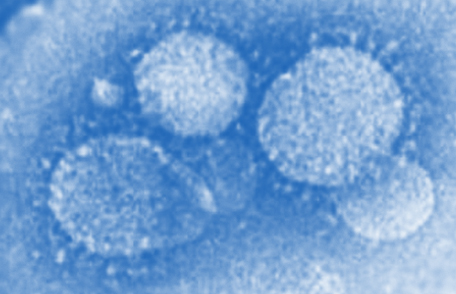Using AI to control energy for indoor agriculture
30 September 2024
Published online 20 October 2014
New research reveals the unusual molecular mechanism by which the MERS virus infects host cells.

© CDC
Researchers have identified the mechanism by which the Middle East Respiratory Syndrome coronavirus (MERS-CoV) gains entry into host cells, a key step in the infection process.
MERS-CoV emerged in Saudi Arabia two years ago, and there have been more than 850 laboratory-confirmed cases worldwide since then, more than 300 of which have been fatal.
Earlier this year, researchers from Cornell University established that camels act as intermediate hosts for MERS-CoV, and can transmit the virus to humans. Several research groups are developing MERS-CoV vaccines, based either on antibodies that neutralise the virus, or compounds that inhibit it in some other way.
The latest study, published in Proceedings of the National Academy of Sciences, may not only help to explain the multiple-host life cycle of MERS-CoV, but opens up new avenues for the development of a vaccine1.
Viral infection involves proteins on the surface of the virus, which recognise, bind to and interact with components of the membrane of the cell being infected. In the case of MERS-CoV, an envelope protein called spike facilitates fusion of the viral particle with the cell membrane, so that the viral DNA can be injected into the cell.
Typically, this involves cutting of the viral envelope protein at specific locations. This process is catalysed by specific protein-cutting enzymes called proteases, and prepares the envelope protein for fusion with the cell membrane. The details of how MERS-Cov infects cells were, however, unknown until now.
The researchers Jean Kaoru Millet and Gary Whittaker used bioinformatics combined with biochemical assays to examine the characteristics of the MERS-CoV spike protein, and found that fusion involves an unusual two-step mechanism.
Both sites are recognized by a protease called furin, which acts on one during synthesis of the spike protein, and on the other later on, during entry into the host cell.
“Furin cleavage sites are observed in the S protein of MERS-CoV isolated from camels,” says Whittaker. “Acquisition of cleavage sites by mutation may have allowed the virus to infect more cell types within camels and to spread more easily through the animals' secretions and fluids.”
Such mutations, he adds, might alter how the spike protein binds to cell surface receptors, how it is prepared for fusion by host proteases, and which species the virus can infect.
Humans have a close relationship with camels in much of the Arab world, and in Saudi Arabia in particular. Many Saudi camel traders drink camel milk regularly, and this is one possible route of infection.
Despite knowing the MERS-CoV life cycle and infection process, and the fact that Saudi health officials say they are doing all they can to contain the virus, camel traders apparently remain unaware of the risks, according to a recent BBC report.
“We are currently studying antiviral strategies based on the finding that furin activates MERS-CoV entry into host cells,” Whittaker continues. “We are also exploring the diversity of MERS-CoV spike proteins, by comparing the sequences of various isolates, in particular from camels, and we are studying related viruses from bats, which may help reveal how MERS-CoV became able to infect camels and humans.”
doi:10.1038/nmiddleeast.2014.250
Stay connected: